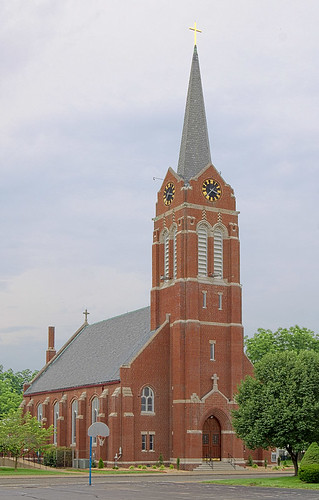
The church was founded in 1857. According to a sesquicentennial history of the church:
Many Catholics began to arrive in this area in the year 1800. Settlements began in the Silver Creek, Turkey Hill and Twelve Mile Prairie areas (all surrounding Freeburg). Between 1830-1840, the Catholic population was growing at a surprising rate, with missions being laid out throughout the county.
The early faithful here were served by circuit-riding missionary priests. Continuing the history:
In the early 1850’s, the Freeburg Catholics began their quest to have the Diocese establish their mission as an official parish. Freeburg was under the reign of the Diocese of Quincy at this time. It would take several years and many written requests to the bishop to achieve this task and finally in 1857, word was received that the Catholic mission at Freeburg would be known as a parish. It would be called St. Joseph Parish.
Fr. Francis Bloesinger, a Circuit Rider from the diocese began to make frequent stops here, and celebrate mass in the newly acquired property of Adam Stephan, which was converted into a small meeting place for services. This property was a log home and was located on the corner of Alton and St. Clair Streets, where the present church stands today. The first recorded baptism is Jacob Reichert on December 9, 1857.
The present church was built in 1911-1912, from plans by architect Victor Klutho, who also designed Saint Francis de Sales Church in Saint Louis, as well as many other magnificent ecclesial structures.
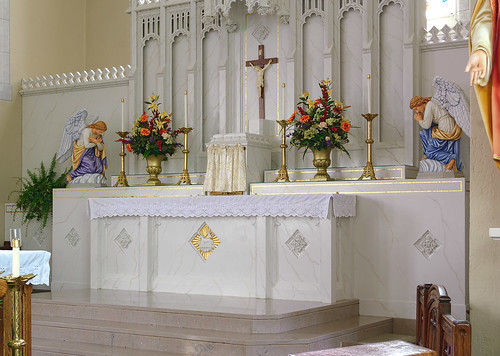
The tabernacle.

The tabernacle.
Mary's altar, showing her crushing the head of the serpent.
The village of Freeburg is named after the city of Freiburg in Germany, the former home of many early villagers. According to a village history:
The big German migrations to this area started around 1830 and continued quite strong for the rest of the century. Obviously, the abundance of coal, the availability of cheap fertile farm land, as well as the proximity to the frontier city of St. Louis, only 20 miles to the northwest, are what attracted settlers to Freeburg.The village is on the vast Illinois prairie, and overlies coal seams; mining was at one time an important industry here.
The parish school was operated by the Adorers of the Most Precious Blood and the School Sisters of Notre Dame. A listing of Sisters and clergy laboring at this church is found here.

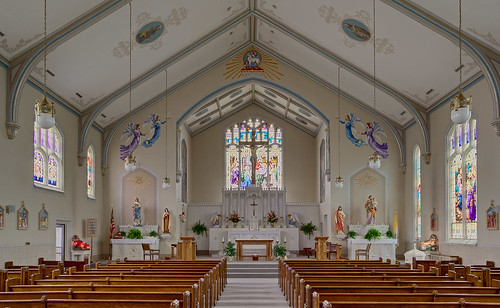
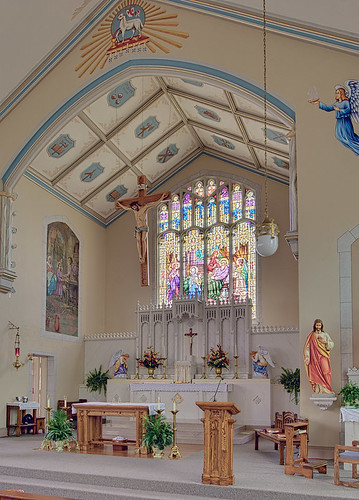

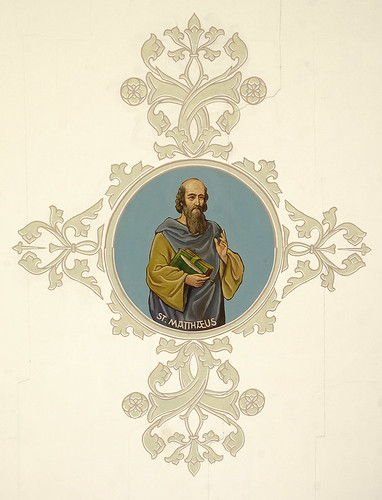
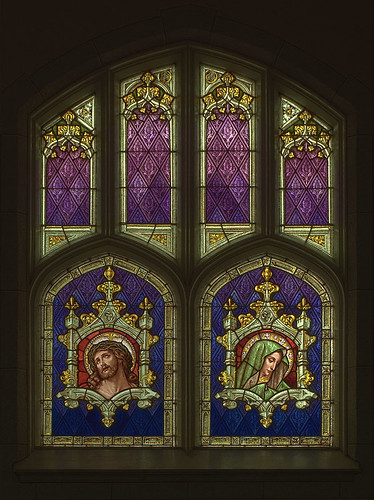
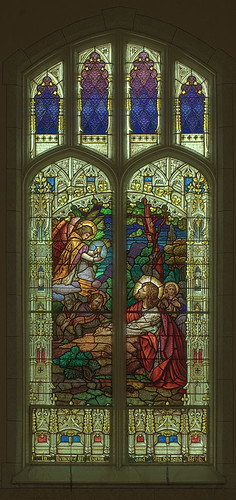
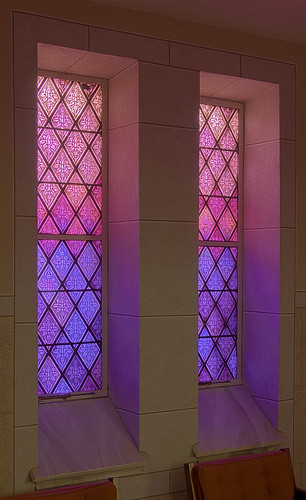
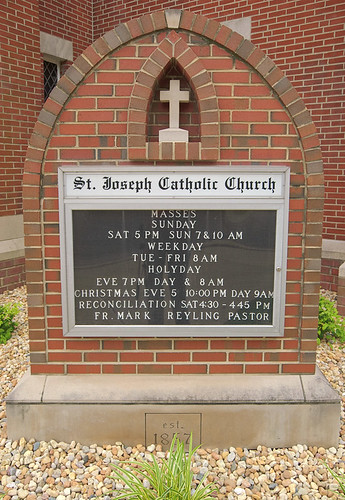

No comments:
Post a Comment